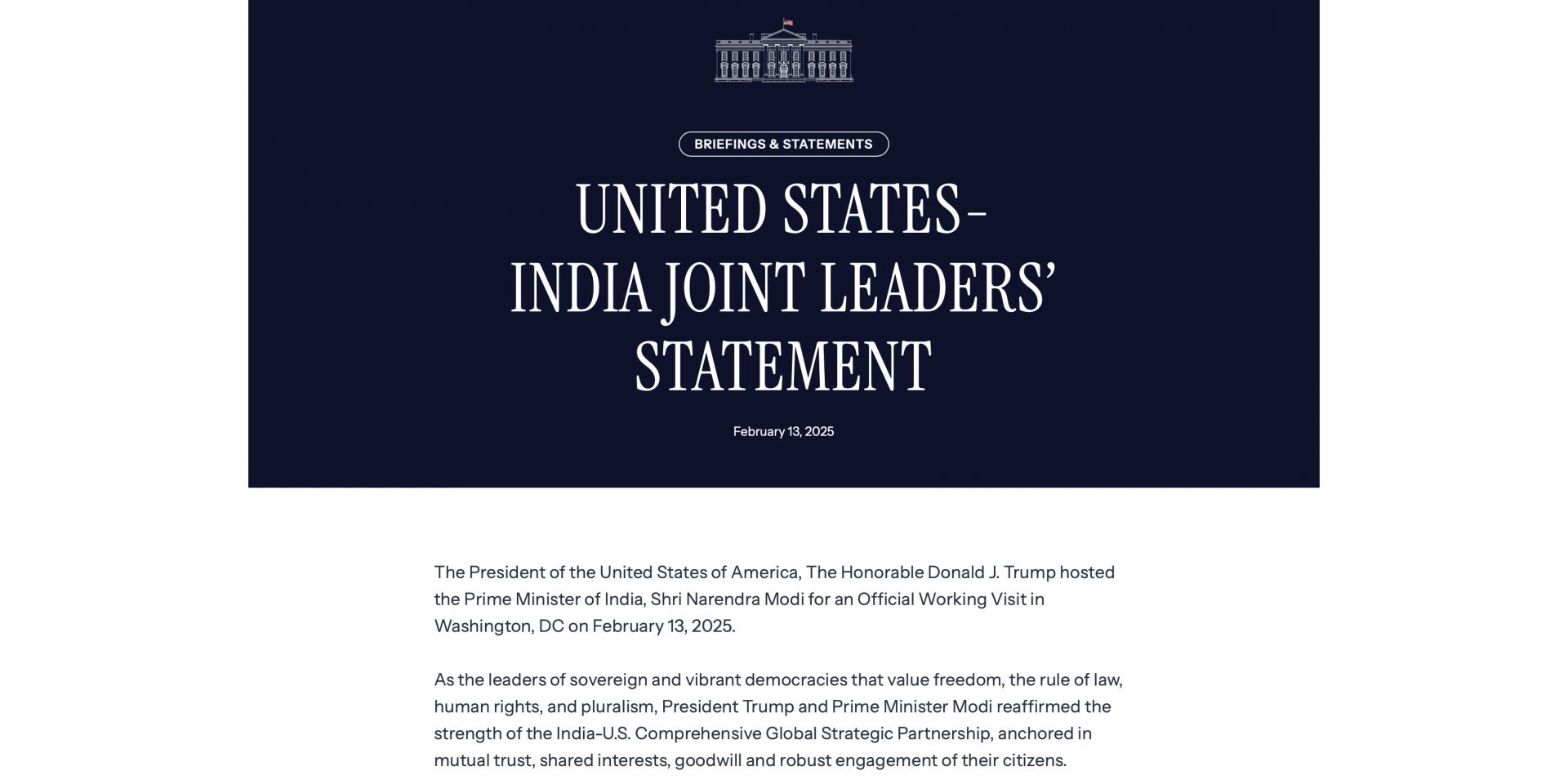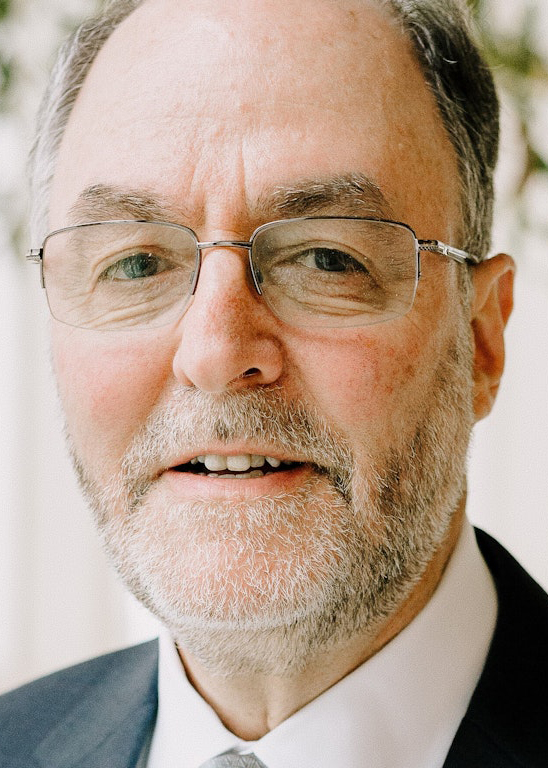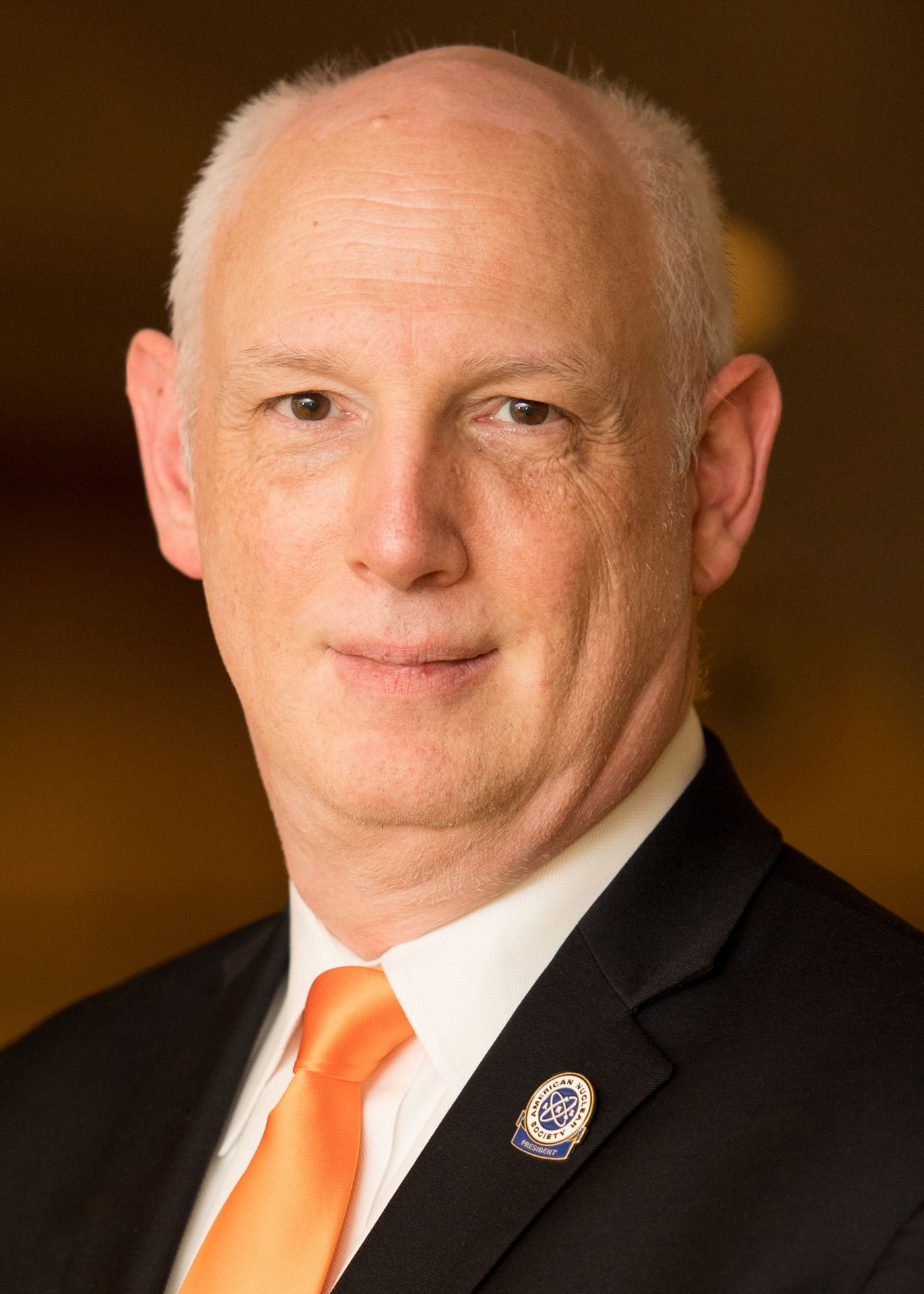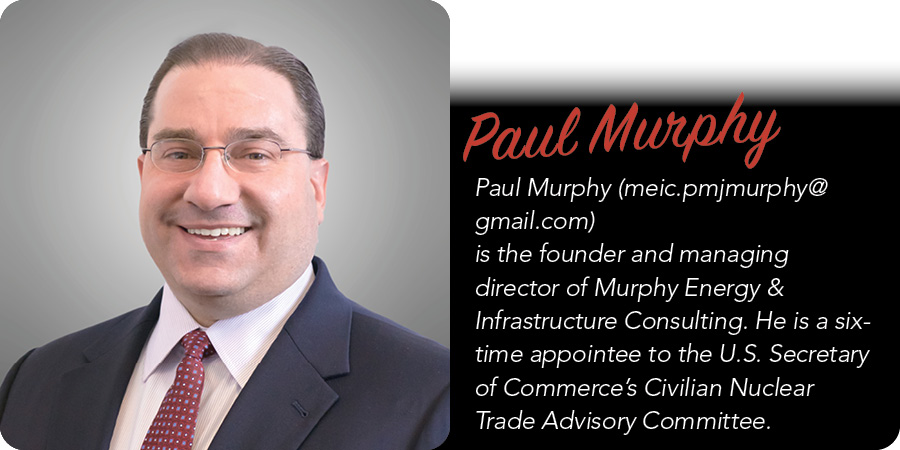U.S., India make new nuclear plans

Indian Prime Minister Narendra Modi met with President Trump last week and agreed to a new initiative to drive “transformative change across key pillars of cooperation” between the two countries.

A message from Goodway Technologies
Optimizing Maintenance Strategies in Power Generation: Embracing Predictive and Preventive Approaches

Indian Prime Minister Narendra Modi met with President Trump last week and agreed to a new initiative to drive “transformative change across key pillars of cooperation” between the two countries.

N. Prasad Kadambi
We welcome ANS members who have careered in the community to submit their own Nuclear Legacy stories, so that the personal history of nuclear science and technology can be captured. For information on submitting your stories, contact nucnews@ans.org.
I graduated with a mechanical engineering degree from Osmania University in Hyderabad, India, and took up nuclear engineering when I was awarded a scholarship by an organization called His Exalted Highness The Nizam of Hyderabad’s Charitable Trust. That scholarship enabled me to do graduate work at Pennsylvania State University, and I enrolled there in 1966. One of the terms of the scholarship was that I return to India after graduation. Hence, I returned to India in 1972 after receiving my Ph.D. and began working at the Bhabha Atomic Research Centre in Mumbai.

Wald
“We’re going to have to do things differently if we hope to trim the output of climate-changing emissions,” writes Matthew L. Wald in an essay recently published by the Breakthrough Institute. Wald is an independent energy analyst, writer, and Nuclear News contributor who formerly worked for the Nuclear Energy Institute and the New York Times. In the essay, he says that despite optimism surrounding progress in clean energy, consumption of fossil fuels is growing, and greenhouse gas emissions are increasing.
Wald suggests that this situation is unlikely to turn around until small modular reactors and other advanced nuclear technologies are demonstrated to be commercially viable.
Race to zero emissions? Wald notes that “global consumption of fossil fuels grew 1.5 percent last year.” Furthermore, “the fossil mix is getting worse; oil was up even faster than total fossil consumption, and demand passed 100 million barrels a day for the first time.

The initial loading of nuclear fuel into the Kakrapar-4 reactor core has begun, the Nuclear Power Corporation of India Ltd. has announced. Permission for fuel load was granted by India’s Atomic Energy Regulatory Board “after carrying out stringent safety and security reviews,” according to the NPCIL.

Steven Arndt
president@ans.org
This will be my last column in Nuclear News as president of the American Nuclear Society. Where has the year gone? For me and for all of us in the nuclear community it has been an exciting and productive 12 months. We have cheered the decision to extend Diablo Canyon operations, witnessed fuel loading and—hopefully by the time the June issue of NN is out—the start of commercial operations of Unit 3 at Vogtle, and seen significant strides forward in the licensing and deployment of small modular reactors. Internationally, we have watched the progress in the deployment of new units in the United Arab Emirates and other countries, as well as renewed commitment to nuclear in countries including Japan, South Korea, India, and the United Kingdom. All of this has been a result of both public and private investment in and commitment to nuclear.
Recently, the Inflation Reduction Act and other government actions in the United States have provided opportunities for increased investment in nuclear energy, including production tax credits and investment tax credits.

Reuters has reported that India is considering the recommendation of a government panel to overturn the nation’s ban on foreign investment in the domestic nuclear energy industry. The panel—established by think tank Niti Aayog, which is headed by Indian prime minister Narendra Modi—also recommended that policies be revised to allow for greater participation by private Indian companies in the nuclear energy industry, which is currently dominated by the Nuclear Power Corporation of India and Bharatiya Nabhikiya Vidyut Nigam, both of which are wholly owned by the government of India. The panel made these recommendations, according to Reuters, so that “both domestic and foreign private companies can complement nuclear power generation by public companies.”

The International Atomic Energy Agency’s board of governors has adopted a resolution calling for an immediate end to the Russian occupation of Ukraine’s Zaporizhzhia nuclear power plant. According to a report from Reuters, the 35-member board voted 26–2 yesterday in favor of the resolution, with seven abstentions. The two “no” votes were cast, unsurprisingly, by Russia and China, while abstentions came from Burundi, Egypt, India, Pakistan, Senegal, South Africa, and Vietnam.

Three factors will drive nuclear exports: energy security, decarbonization, and geopolitics. Recent power prices in Europe, coupled with the situation in Ukraine, demonstrate the interplay of all three factors. Nuclear exports have to be viewed in the context of the current geopolitical climate, particularly relative to Russian and Chinese competitive offerings. Finally, the critical importance of nuclear energy in meeting global decarbonization efforts can be a driving force for exports, further enhanced by the inclusion of nuclear energy in clean/green taxonomies and the accompanying support from the ESG (environmental, social, and governance) investor community.

Holtec International announced yesterday that its India-based subsidiary, Holtec Asia, has received an order from Mumbai-based Nuclear Power Corporation of India Limited (NPCIL) for two HI-STAR 149 transport casks to serve the away-from-reactor storage facility for the Kudankulam nuclear power plant.

ADVANCED REACTORS MARKETPLACE
GEH’s BWRX-300 SMR technology chosen for Darlington clean energy project
GE Hitachi Nuclear Energy has been selected by Ontario Power Generation as technology partner for the Darlington site's new nuclear plant project. GEH will work with OPG to deploy a BWRX-300 small modular reactor as early as 2028 at the Darlington site in Canada.
■ NuScale Power and Kazakhstan Nuclear Power Plants LLP have signed a memorandum of understanding to explore the deployment of NuScale VOYGR power plants in Kazakhstan. KNPP specializes in the development of nuclear power plant construction in Kazakhstan. The agreement calls for a sharing of nuclear and technical expertise between NuScale and KNPP. Under the MOU, NuScale will support KNPP’s evaluation of NuScale’s SMR technology, including nuclear power plant engineering, construction, commissioning, operation and maintenance, and project-specific studies and design work.
■ PKN ORLEN and Synthos Green Energy have signed an agreement to set up a joint venture, ORLEN Synthos Green Energy, with a goal to prepare and commercialize small nuclear reactor technology, particularly GE Hitachi Nuclear Energy’s BWRX-300 reactors, in Poland. Related, BWXT Canada Ltd. signed a letter of intent with Synthos and GEH for the manufacture of key SMR components for Poland.

Kandasamy
Daunting tasks are nothing new for Jhansi Kandasamy. Her record of accomplishments over three decades suggests that she is often the first to succeed where others fall short. “I like to be the first,” she said with a laugh.
Her latest first? Kandasamy was recently named Idaho National Laboratory’s net-zero director. She is charged with achieving net-zero carbon emissions for INL within the next 10 years and her plan is to be 75 percent toward that goal within the next five years.
John Wagner, INL director, announced the Net-Zero initiative on Earth Day 2021, and he acknowledged it won’t be easy. “I understand this is an audacious goal,” he said, “but overcoming significant national challenges is exactly what national laboratories were established to do.”

Work on the third phase of the multi-reactor project at India’s Kudankulam nuclear power plant formally commenced earlier this week with the first pouring of concrete into the foundation plate of the Unit 5 reactor building.

From left: Secretary of Defense Mark Esper and Secretary of State Mike Pompeo participate in the U.S.-India 2+2 Ministerial Dialogue plenary session with Indian Defense Minister Rajnath Singh and Indian External Affairs Minister Subrahmanyam Jaishankar in New Delhi, India, on October 27, 2020. Photo: State Department/Ron Przysucha
In New Delhi earlier this week, U.S. Secretary of State Mike Pompeo and Secretary of Defense Mark Esper joined their Indian counterparts, Minister of External Affairs Subrahmanyam Jaishankar and Minister of Defense Rajnath Singh, for the third U.S.-India 2+2 Ministerial Dialogue—a yearly confab focused on strengthening the strategic relationship between the two nations. (In February of this year, the White House elevated that relationship to Comprehensive Global Strategic Partnership status.)
The first 2+2 dialogue took place in New Delhi in September 2018, with a second held in Washington, D.C., in 2019. Washington is scheduled to host the fourth such meeting next year.
China is on track to overtake the United States in nuclear power capacity by 2026, according to GlobalData, a U.K.-based research and analytics company.
More than 160 GW of nuclear capacity will likely be added globally between 2020 and 2030, some 66 percent of which is anticipated to take place in China, India, and Russia, the company reported on September 9. China alone is set to account for more than 50 percent (83 GW) of the new capacity, followed by India with 8.9 percent (14.5 GW) and Russia with 6.4 percent (10.5 GW). GlobalData also projects that during the same period, more than 76 GW of nuclear capacity will be retired.
The accident that occurred at Three Mile Island on March 28, 1979, brought about many changes to the nuclear industry. Among the changes was the industry stopping to reflect on current procedures and the training of its employees. Exhorted by the findings of the Kemeny Commission and sponsored by the Department of Energy, industry leaders and training personnel began meeting on improvements to training at the Gatlinburg Conference in the early 1980's.
Plus a few pointers to what's in store for 2013
Margaret Harding is blogging from the ANS-sponsored Indo-US Nuclear Safety Summit in Mumbai, India.
Margaret Harding is blogging from the ANS-sponsored Indo-US Nuclear Safety Summit in Mumbai, India.
Government auditor cites lack of regulatory independence and says overall effectiveness is weak
Really very little has changed